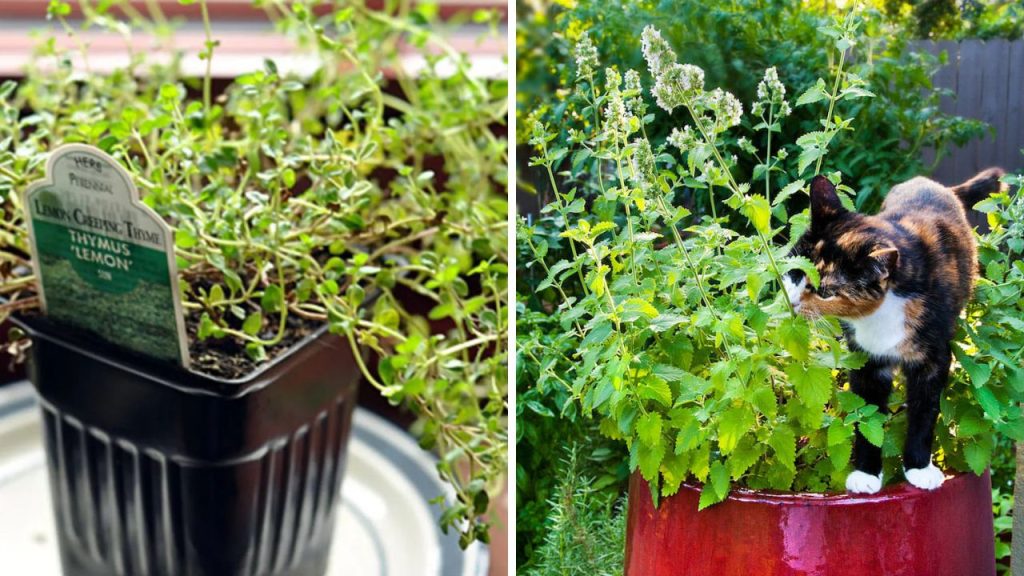Managing downspout runoff isn’t just about preventing puddles and foundation damage—it’s also an opportunity to enhance your outdoor living space with charm, function, and a touch of creativity.
Whether you’re working with a modern back porch, a cozy cottage-style yard, or an expansive suburban garden, these downspout ideas will help you protect your home while improving curb appeal. Let’s explore 23+ smart and stylish ways to manage runoff with purpose.
1. Rock-Lined Drainage Swales
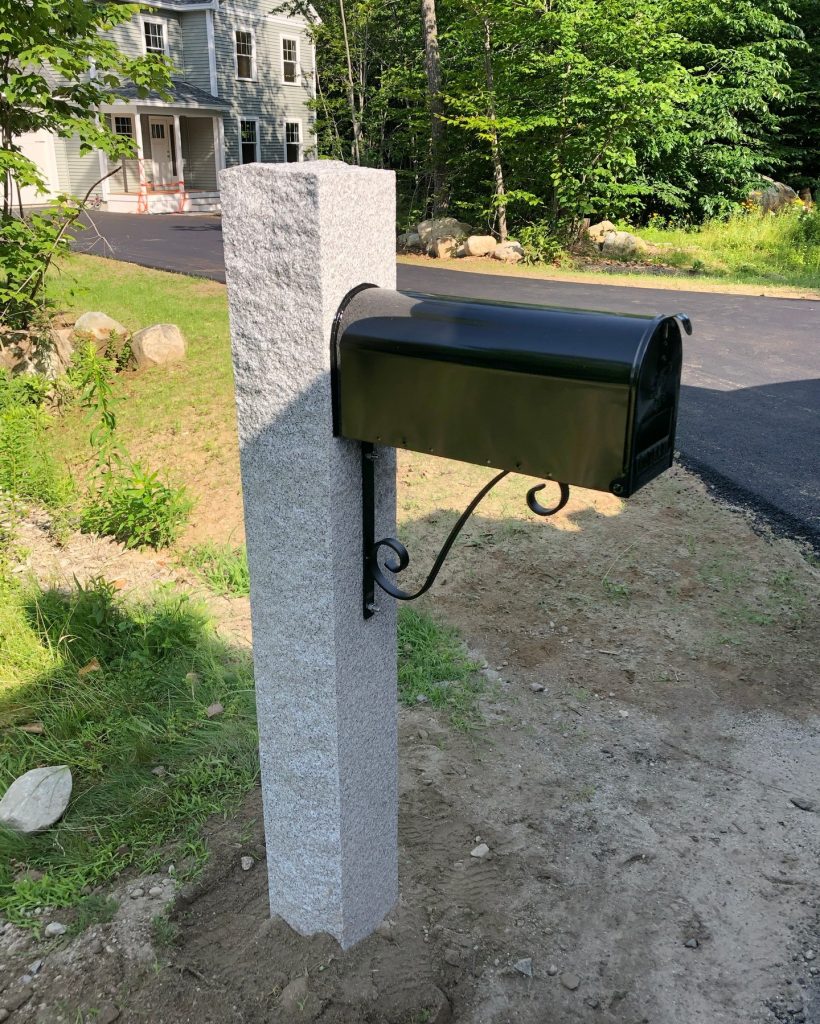
A rock-lined swale is both beautiful and functional—perfect for gently guiding water away from your home.
This shallow, trench-like solution is filled with decorative river rock or gravel and often winds through your yard like a dry creek bed. It slows the flow of water, helps prevent erosion, and adds a sculptural element to your landscape. You can even line it with drought-tolerant plants or ornamental grasses to create a more natural, eco-friendly vibe.
This is a fantastic option if you have a slope near your foundation or an awkward area where water tends to collect. Bonus: swales blend beautifully with modern patio furniture, back porch decor, or even minimalist landscaping.
Unlike pipes or underground drains, swales offer a low-maintenance solution that’s easy to access and adjust. If you’re going for a natural aesthetic with a water-wise twist, this one’s a winner.
2. Decorative Splash Blocks
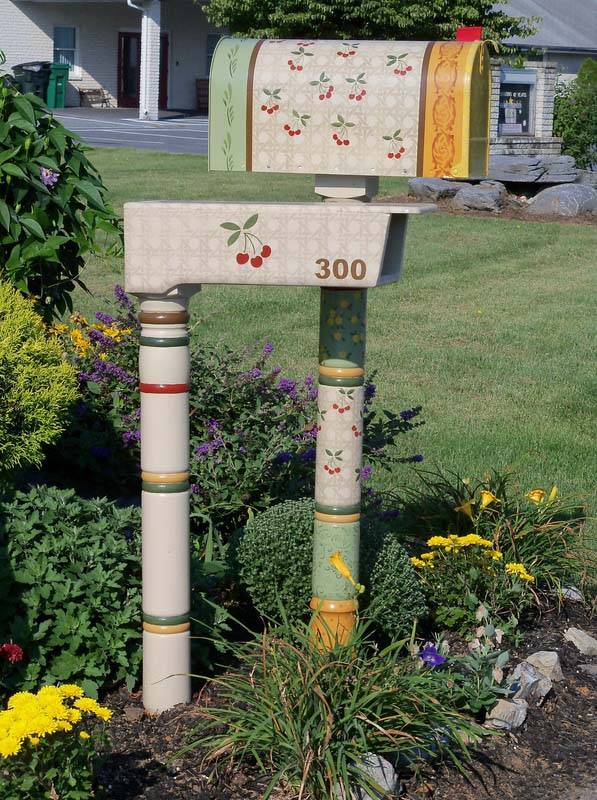
Forget the boring gray concrete—today’s splash blocks are full of personality and purpose.
These angled blocks sit at the bottom of your downspouts to channel water away from your home’s foundation. But instead of choosing a basic model, why not opt for something a bit more charming? You can find splash blocks shaped like leaves, stones, turtles, or even whimsical animals. Some homeowners even DIY their own using painted concrete molds or mosaic tile.
They’re an affordable upgrade that can immediately improve the look of your yard or porch area. They’re especially helpful on paved areas or mulched flower beds where you want to avoid erosion without going full-scale on a drainage system.
Match them with your modern back porch color scheme or use them as subtle focal points to draw attention to a beautifully curated garden bed.
3. Rain Chains That Double as Garden Art
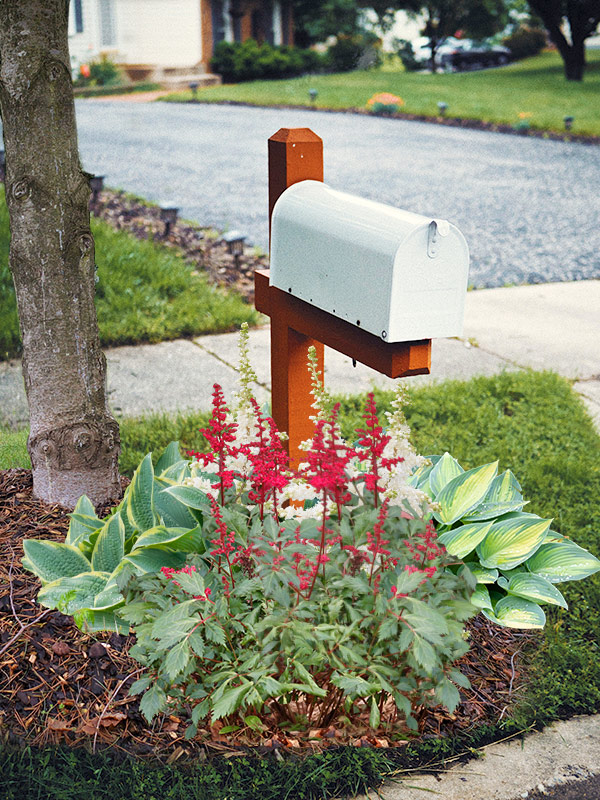
Elegant, peaceful, and full of charm—rain chains are a popular alternative to the standard downspout.
Originating from Japanese architecture, rain chains guide water down in a cascading pattern, often through small cups, links, or decorative shapes. The result? A lovely water feature that’s both functional and relaxing to listen to during a light rain.
They’re ideal for homes with modern porch decor or minimalist garden designs. You can even direct the base of your rain chain into a rain barrel, splash basin, or mini dry creek bed for added runoff control.
Rain chains work especially well in areas that don’t experience torrential rainfall regularly, and they’re easy to install in place of traditional downspouts. Choose copper, brushed steel, or ceramic to match your outdoor furniture or home exterior.
Not only do they reduce soil erosion, but they also add that perfect “wow” factor to any outdoor living space.
4. Mini Dry Creek Beds
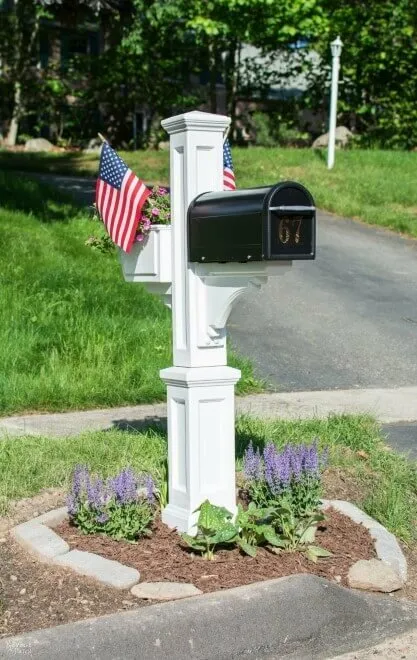
A mini dry creek bed is one of the most creative ways to manage runoff while adding natural charm to your landscape.
This solution involves carving a shallow path for water to follow, then filling it with river rock, gravel, and complementary plantings. It mimics the look of a dried-up river but comes to life when it rains—redirecting water safely across your yard or garden.
These are particularly effective if you have frequent puddles or muddy patches near your back porch or foundation. And they’re visually stunning, especially when paired with low-maintenance grasses, sedum, or ornamental shrubs.
They also work well as a DIY weekend project and can be shaped to fit any style—from wild cottage gardens to sleek modern patios.
A well-designed dry creek bed blends seamlessly with your lawn, garden borders, or even a rock garden, turning a functional feature into an outdoor design highlight.
5. French Drains with a Flowerbed Twist
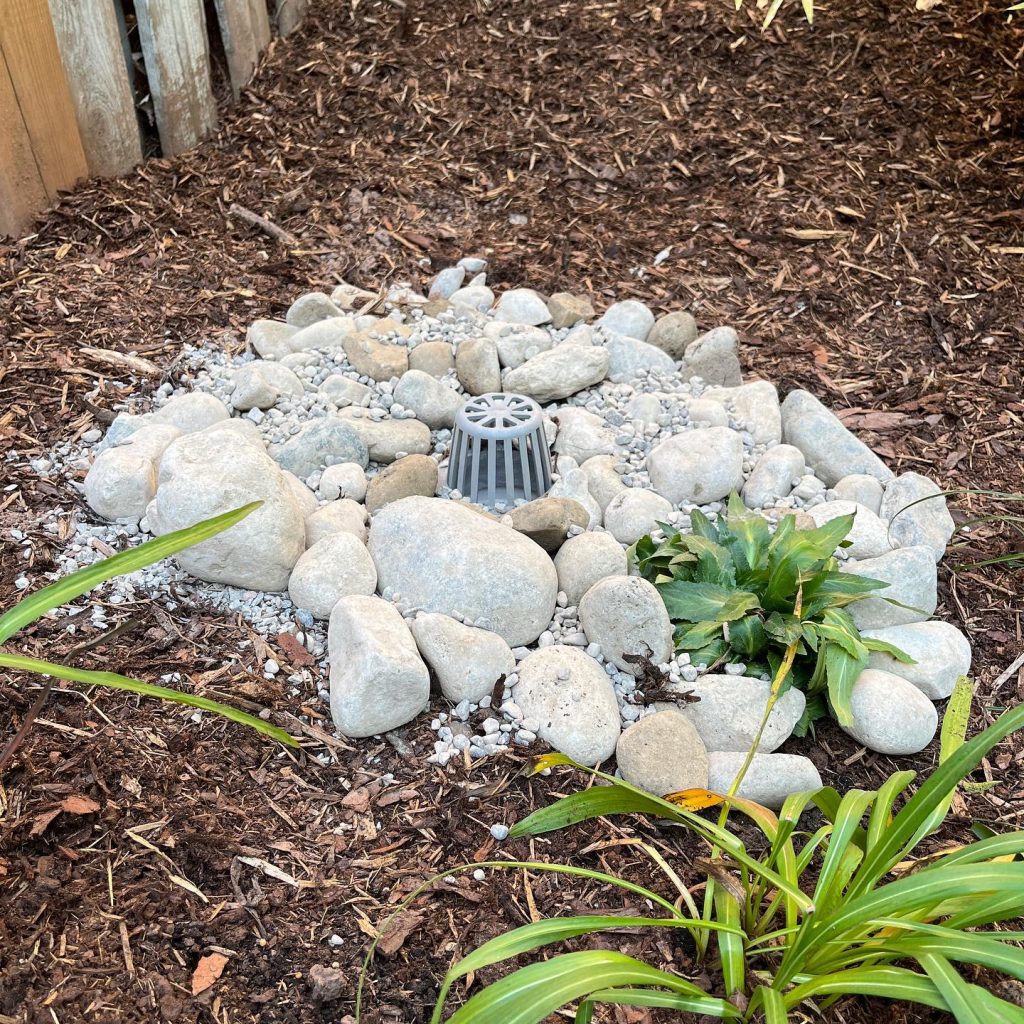
French drains are a hidden gem in the world of downspout runoff solutions—and when combined with flowerbeds, they’re downright genius.
A French drain consists of a gravel-filled trench with a perforated pipe underneath that redirects water underground. To make it more appealing? Simply plant your favorite flowers, shrubs, or groundcover over the top.
This option is perfect for front yards or patio spaces where appearance matters just as much as function. It keeps your drainage system out of sight while giving your garden a fresh, vibrant look.
French drains are especially helpful for areas with heavy clay soil or poor grading. When paired with attractive foliage, the result is a seamless blend of form and function—ideal for homeowners who want a hidden system that doubles as a decor piece.
Try combining this setup with modern patio furniture and container plants for a look that feels curated and practical.
6. Rain Barrel with Overflow System

Why let all that rainwater go to waste when you can collect it and manage overflow at the same time?
Rain barrels are an eco-smart choice, allowing you to store runoff for watering your plants and gardens. But the key is making sure your overflow doesn’t cause problems. Adding an overflow hose or pipe that leads to a garden bed, underground pipe, or dry well can prevent flooding and make your setup much more efficient.
Choose a barrel that complements your home’s style—wood-look resin barrels are popular with farmhouse and cottage-inspired porches, while sleek black or charcoal options work well for modern back porch decor.
Many homeowners even disguise their barrels with lattice screens, vines, or potted plants to make them part of their outdoor aesthetic.
It’s a sustainable, stylish, and budget-friendly idea that gives your runoff a second life.
7. Gutter Planters

Why not let your downspouts do double duty by watering some pretty plants along the way?
Gutter planters are vertical containers or troughs placed directly beneath your downspouts. As water flows down, it irrigates the soil, keeping flowers, herbs, or succulents hydrated during rainstorms.
You can DIY these using reclaimed wood, metal containers, or even upcycled gutter sections. They’re perfect for small spaces, patios, or areas where you want to add vertical interest without committing to a full garden.
This solution works best when paired with a diverter that prevents overwatering during heavy rain. And it’s an excellent way to blend your drainage needs with your personal aesthetic—whether you’re into rustic charm or clean, modern lines.
Pair with a back porch bistro set or cozy bench for a space that’s both lovely and low-maintenance.
8. Permeable Paver Runoff Path

Permeable pavers offer one of the sleekest, most modern solutions for downspout runoff—especially if you’re looking to upgrade a side yard, walkway, or patio area.
These specially designed pavers allow water to seep through into the ground below rather than pooling on the surface or rushing off into the street. Connected to your downspout via a short pipe or trough, they transform runoff into a resource instead of a problem.
This is a smart solution for homes that struggle with puddling or icy patches during colder months. You can design your path with stylish geometric layouts or use mixed materials like stone and gravel to enhance visual appeal.
And because it aligns beautifully with modern back porch ideas and outdoor living trends, it’s a favorite among homeowners who value sustainability and design.
9. Gravel-Filled Trenches Around the House
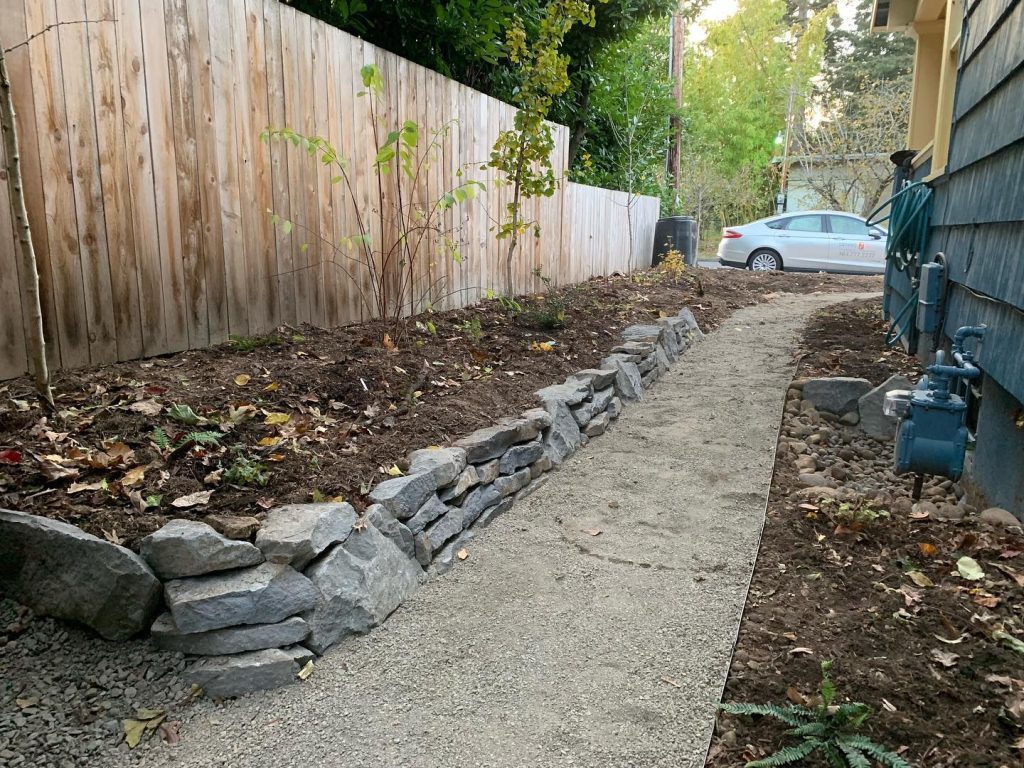
Simple, low-cost, and highly effective—gravel-filled trenches are a classic way to handle runoff around your home’s perimeter.
By digging a narrow trench about 6–12 inches deep and filling it with drainage gravel, you create an easy path for rainwater to follow away from your foundation. It’s a practical solution for areas where you want to reduce splash-back, prevent erosion, or avoid moisture buildup near the base of your house.
This idea works especially well in homes with minimal landscaping or where you want a more structured, architectural look. You can even edge the trench with pavers or timber for a more polished finish.
Plus, gravel trenches require very little maintenance and blend well with rock gardens or mulch beds—making them a versatile option for outdoor living spaces of all sizes.
10. Rain Gardens
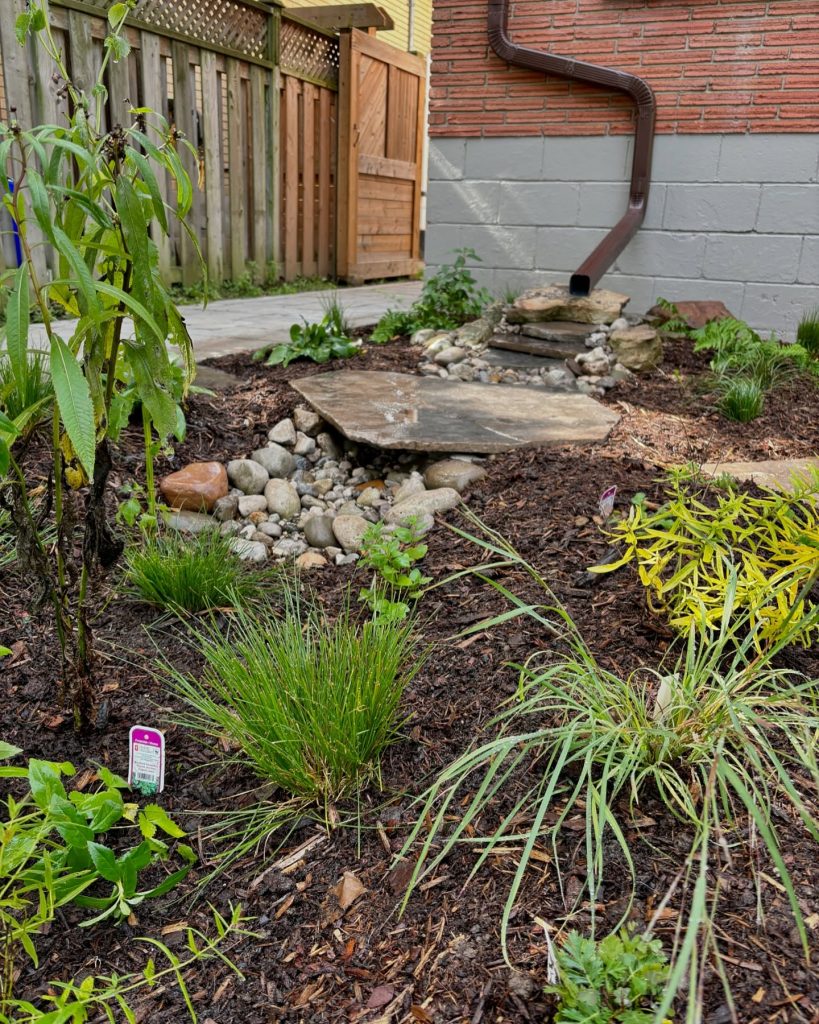
Rain gardens are the ultimate blend of sustainability and style—designed to capture and filter runoff with the help of native plants and clever design.
These shallow, bowl-like depressions are placed at the end of a downspout and filled with layers of sand, compost, and water-loving plants. They allow water to pool temporarily before it gradually soaks into the ground.
This process not only reduces runoff but also helps clean pollutants before the water returns to the natural water table. It’s a win-win for eco-conscious homeowners.
Plant options like black-eyed Susans, Joe-Pye weed, coneflowers, or sedges work beautifully in these gardens and provide seasonal interest. Surround the area with mulch and edging stones to give it a tidy, landscaped look.
Rain gardens can be a focal point of your yard—especially when integrated with your modern patio furniture or back porch seating area.
11. Underground Drainage Pipes
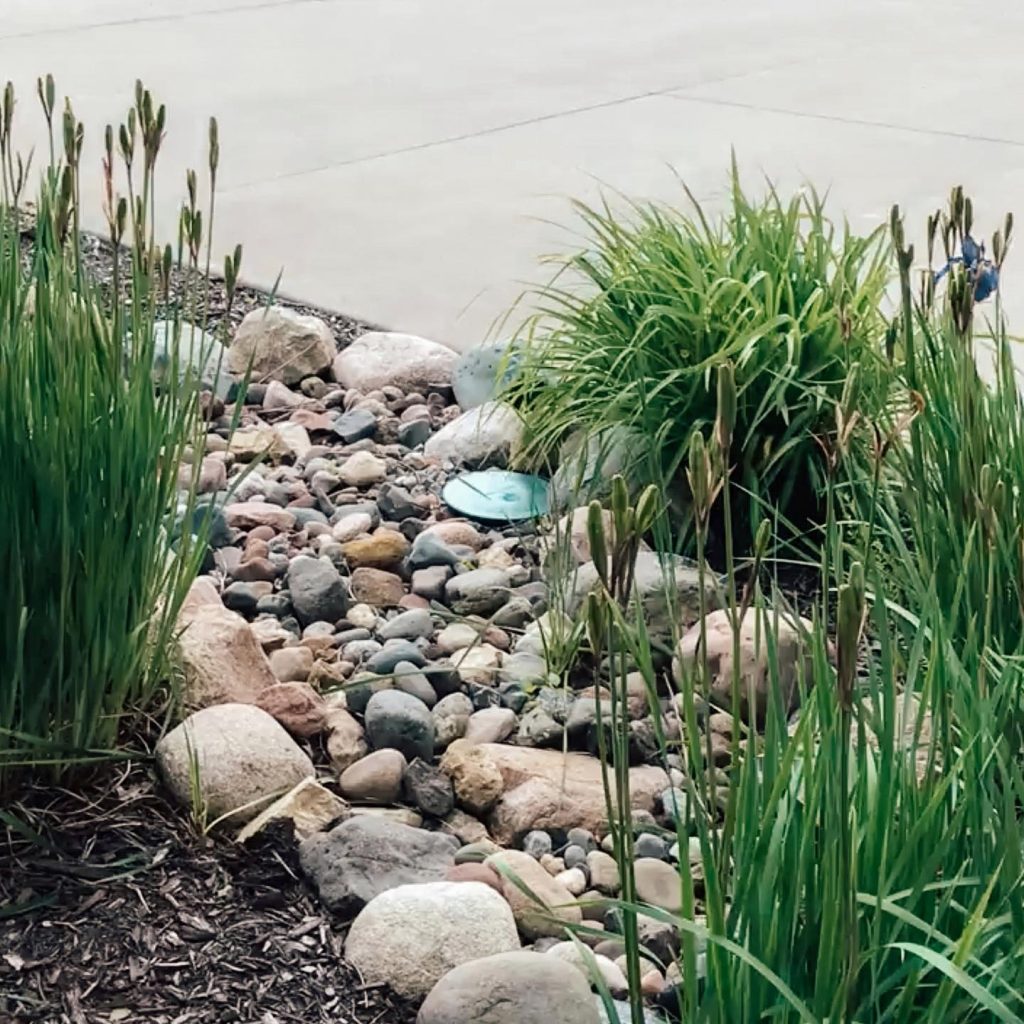
When surface solutions aren’t enough, underground drainage pipes offer a hidden, highly effective way to manage downspout runoff.
This system involves connecting your downspouts to a buried PVC or corrugated pipe that carries water safely away from your home. The pipe can lead to a dry well, rain garden, or open area of your yard—keeping your foundation dry and your landscaping intact.
What’s great about underground drainage is how discreet it is. You won’t see any tubing snaking through your lawn, and your garden or patio design won’t be interrupted. This is ideal if you’re curating a modern back porch setup or a tidy front yard with structured plantings.
It’s also perfect for homes where space is limited or runoff volume is high. If you live in an area with heavy rainfall, this method gives you peace of mind with minimal surface clutter.
You can disguise the intake with a decorative catch basin, and the outlet can emerge in a mulch bed, rock feature, or even into a natural slope where water can safely disperse.
12. Stepping Stone Splash Zones
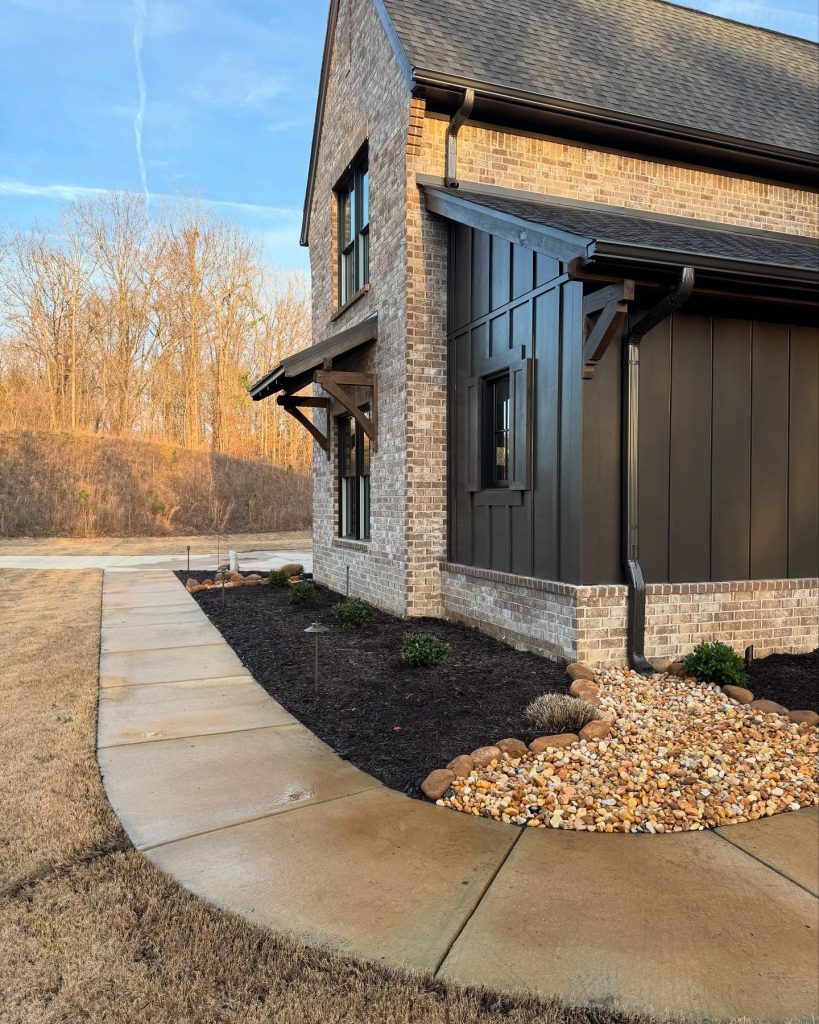
Add a whimsical and practical touch to your yard with stepping stone splash zones beneath your downspouts.
This method is as simple as it is stylish. By placing large, flat stepping stones where the water exits, you create a controlled landing spot for runoff while preventing erosion and splash-back. Better yet, it doubles as a decorative element for your garden or side yard.
Choose materials like slate, flagstone, or concrete to match your outdoor aesthetic. You can even opt for mosaic tiles or painted stones to add color and personality.
These splash zones work wonderfully next to flower beds, patio areas, or pathways leading from your back porch. And because they’re so easy to install and rearrange, they’re perfect for DIY enthusiasts who want flexibility.
Pair them with potted plants, solar lights, or ornamental grasses for an elegant look that helps protect your yard while enhancing it.
13. Decorative Catch Basins

Decorative catch basins are where smart engineering meets stylish landscape design.
These units collect water at the end of your downspout and then direct it underground or into a controlled drainage area. Unlike traditional grates or industrial-style basins, decorative catch basins are designed to blend in—or even stand out—as part of your landscape.
You’ll find them in cast iron, bronze, stone, and resin, with intricate designs ranging from floral patterns to modern grids. Some even double as planters or garden statues, seamlessly working with your porch decor or patio theme.
Catch basins are especially useful if your downspout drains into a paved area or near a walkway. Instead of letting water pool or run wild, the basin captures it and redirects it through an underground pipe or gravel pit.
They’re a gorgeous solution that helps keep your yard safe and dry—while boosting your curb appeal in the process.
14. Corrugated Drain Tubing with Camouflage
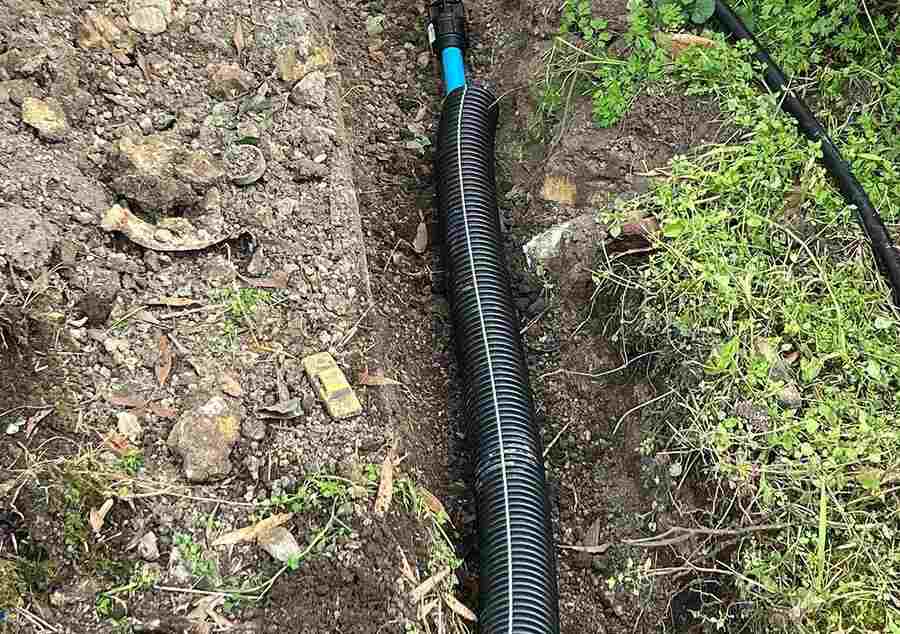
Flexible and affordable, corrugated drain tubing is a common solution for homeowners looking to extend their downspouts—but that doesn’t mean it has to be an eyesore.
These black or green plastic tubes are easy to install and great for guiding water to a more suitable location in your yard. But instead of leaving them exposed, you can cleverly camouflage them with mulch, decorative gravel, or low-growing ground cover plants.
Some homeowners even build wooden or cedar covers that mimic garden troughs, helping the tubing blend beautifully into cottage-style or rustic landscapes.
This solution is especially handy for large yards or homes with multiple runoff zones. You can direct the tubing under walkways, around garden beds, or along the edge of a modern patio without disrupting the view.
It’s a simple upgrade that proves even practical solutions can be stylish with a little creativity.
15. Terraced Yard Drainage

If your home sits on a slope, terracing is one of the most visually stunning and effective ways to manage runoff.
Terracing involves creating flat, stepped sections in your yard—each tier catching and slowing the flow of water. Combined with gravel, plants, and small retaining walls, this technique helps reduce erosion while turning a steep yard into a showcase of texture and greenery.
You can incorporate native plants that thrive in moisture-rich soil, or line the terraces with stone paths and rain-tolerant shrubs. This method works beautifully with a multi-level patio or layered back porch design, adding depth and drama to your landscape.
It’s especially effective in regions with heavy rainfall or in yards where water tends to rush downhill. While it may require more initial work or professional help, the result is a sculpted yard that feels like a curated outdoor living experience.
16. Rock Gardens at the Drainage Point

Turn runoff into a focal point by creating a rock garden at the base of your downspout.
This low-maintenance idea works by placing a bed of large decorative rocks, pebbles, and drought-tolerant plants right where the water exits. It diffuses the flow and prevents erosion, all while adding natural beauty to your outdoor space.
Think of it as a fusion between function and form—great for modern backyards or serene cottage gardens. You can add height with stacked stones, texture with succulents or sedum, and seasonal interest with flowering perennials.
Use it to fill an awkward corner near your porch, or install it next to a paved path for a natural contrast. It’s an easy way to integrate your runoff solution into your yard’s design—and it requires virtually no maintenance after installation.
17. Driveway Channel Drains
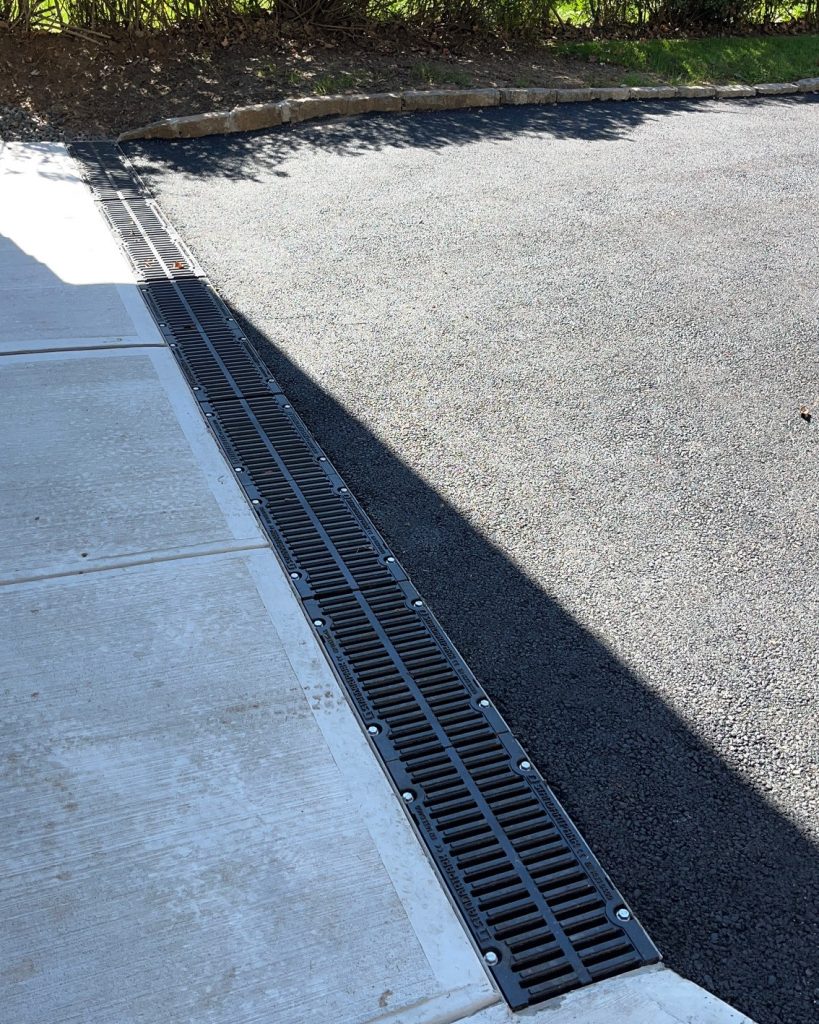
For homes where downspouts drain toward the driveway, channel drains are a must.
These long, narrow drains run across the driveway to collect and redirect water. You’ve probably seen them in commercial spaces—but now there are decorative versions made for homeowners, with stylish grates in bronze, brushed steel, or matte black finishes.
They connect to underground piping or dry wells, guiding water away from your home and preventing puddles, ice buildup, or staining on concrete. They’re especially useful if your driveway slopes toward the house or has a low spot that traps water.
Pair your channel drain with a modern back porch or garage-facing patio for a clean, cohesive look. It’s one of those upgrades that feels invisible but delivers major results in terms of safety, drainage, and appearance.
18. Split Flow Systems
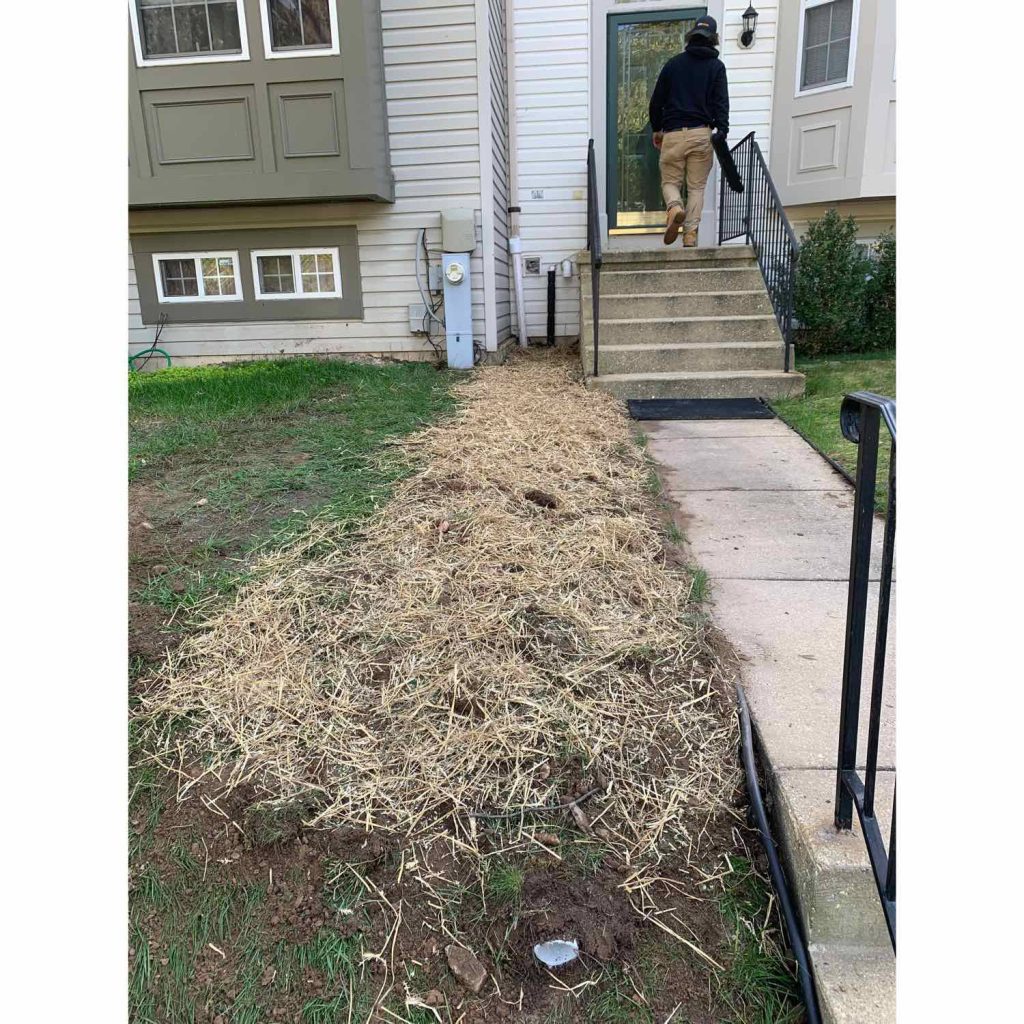
Why send all your downspout runoff to a single place when you can divide and conquer?
Split flow systems use diverters and multiple exit points to distribute runoff across your yard. For example, one pipe could direct water to a rain garden, while another flows into a rock bed or gutter planter.
This system reduces pressure on any one drainage area and is great for large properties or homes with complex layouts. It also lets you customize your landscaping around each outlet—creating zones for edible gardens, pollinator plants, or ornamental beds.
It’s particularly useful for those who enjoy outdoor living and want different “garden rooms” or patio zones with unique aesthetics.
Whether you’re managing runoff from a large roof or just want to add flexibility to your drainage plan, this idea offers both function and creative freedom.
19. Rainwater-Fed Birdbaths or Fountains
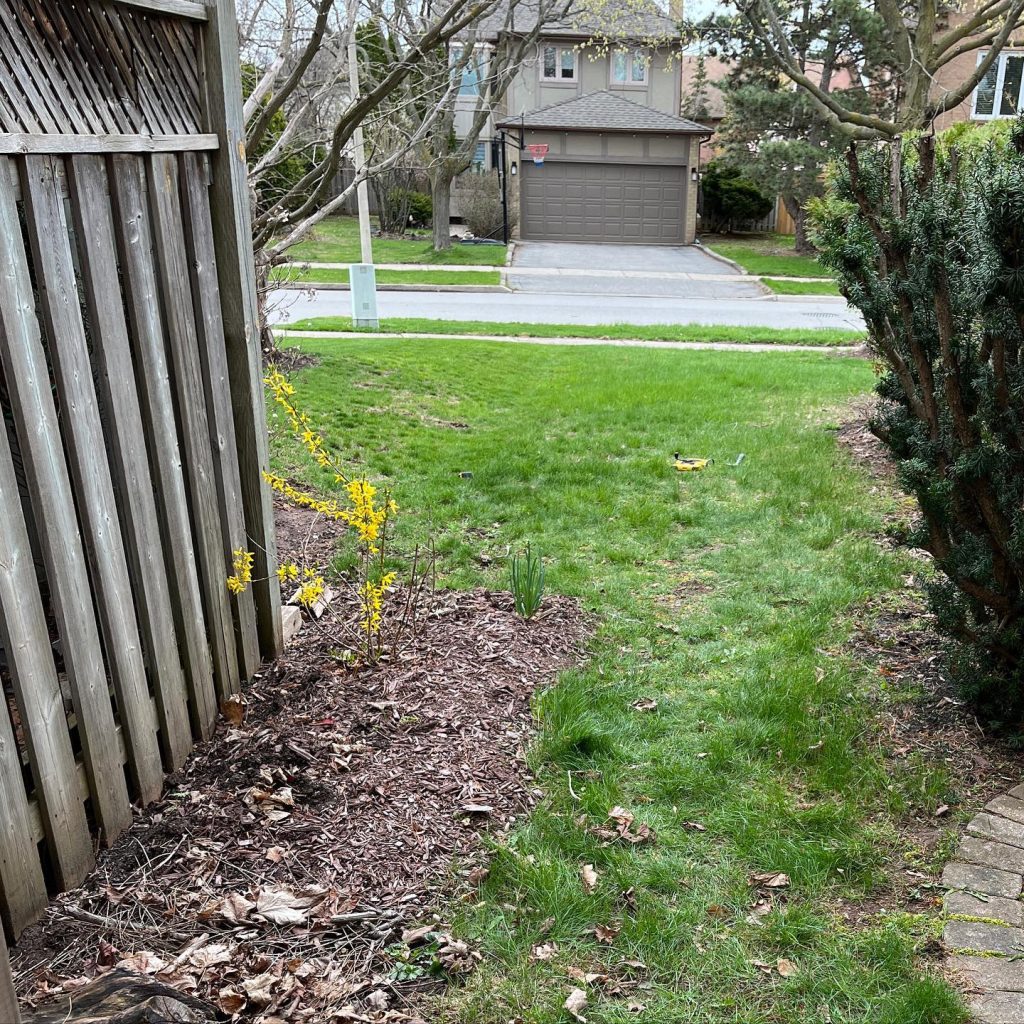
Why not turn runoff into a gift for local wildlife?
By directing your downspout into a birdbath, shallow basin, or garden fountain, you not only control excess water—you also create a peaceful oasis that attracts birds, bees, and butterflies.
Choose a shallow ceramic or stone basin that collects water after each rain. You can even set up a basic pump to create a small fountain effect, using the overflow to irrigate nearby plants.
This idea is perfect for porches and patios that double as bird-watching spots or serene relaxation zones. Place a bench nearby and enjoy the sounds of both rain and chirping birds.
Make sure your structure has overflow outlets or drainage holes to prevent standing water issues. It’s a small touch with a big payoff for your yard’s charm and your local ecosystem.
20. Hidden Drainage Under Garden Beds
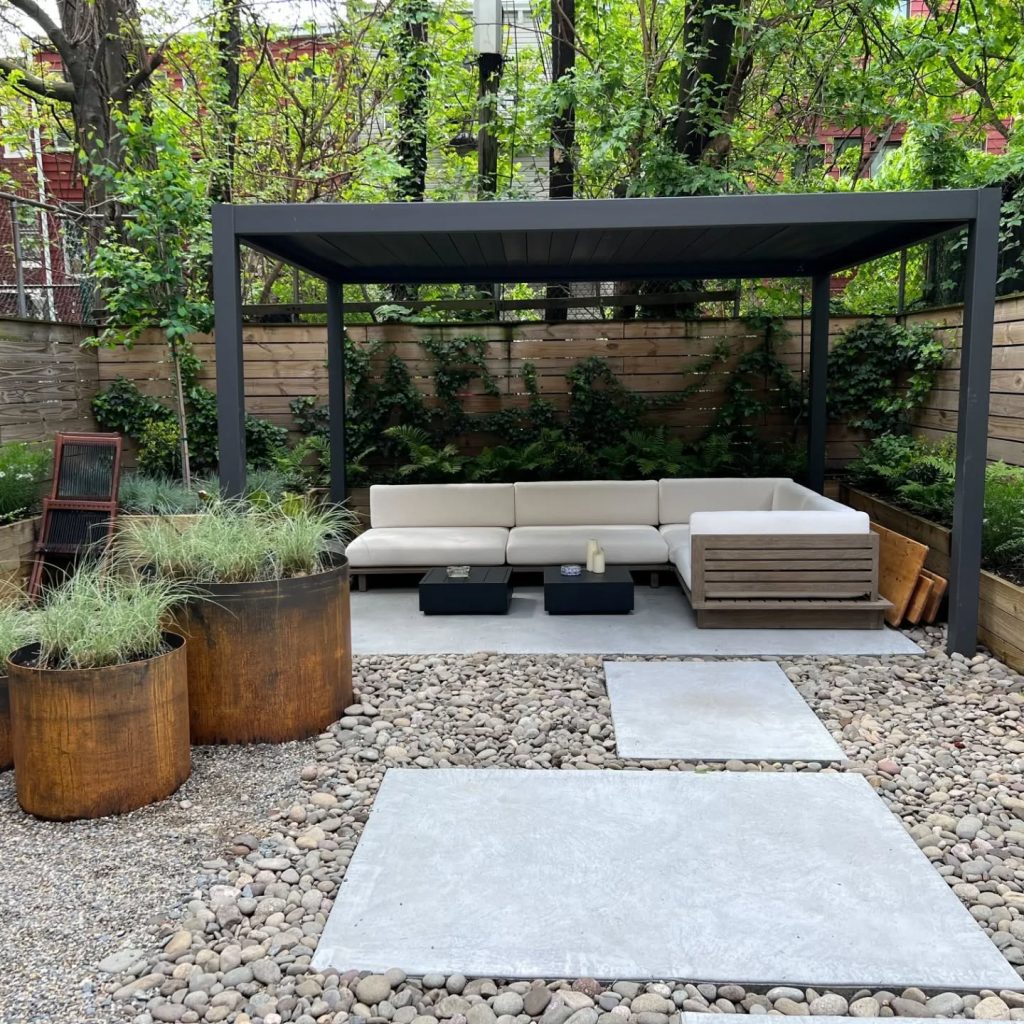
If you love gardening but hate soggy soil, hidden drainage systems beneath your beds may be the perfect solution.
Using perforated pipes or gravel trenches under your raised garden beds allows water to move away quickly and evenly. This not only prevents root rot but also protects your plants from standing water after heavy rain.
It’s especially useful in areas where your downspout drains toward a garden zone. You can build your beds directly over the pipe system, then layer in quality soil and mulch for a seamless look.
For a polished finish, match your garden beds to your back porch decor—using painted wood, stone, or metal that complements your outdoor furniture or planters.
It’s a hidden solution that keeps your plants happy and your garden looking its best.
21. Cedar Box Extensions
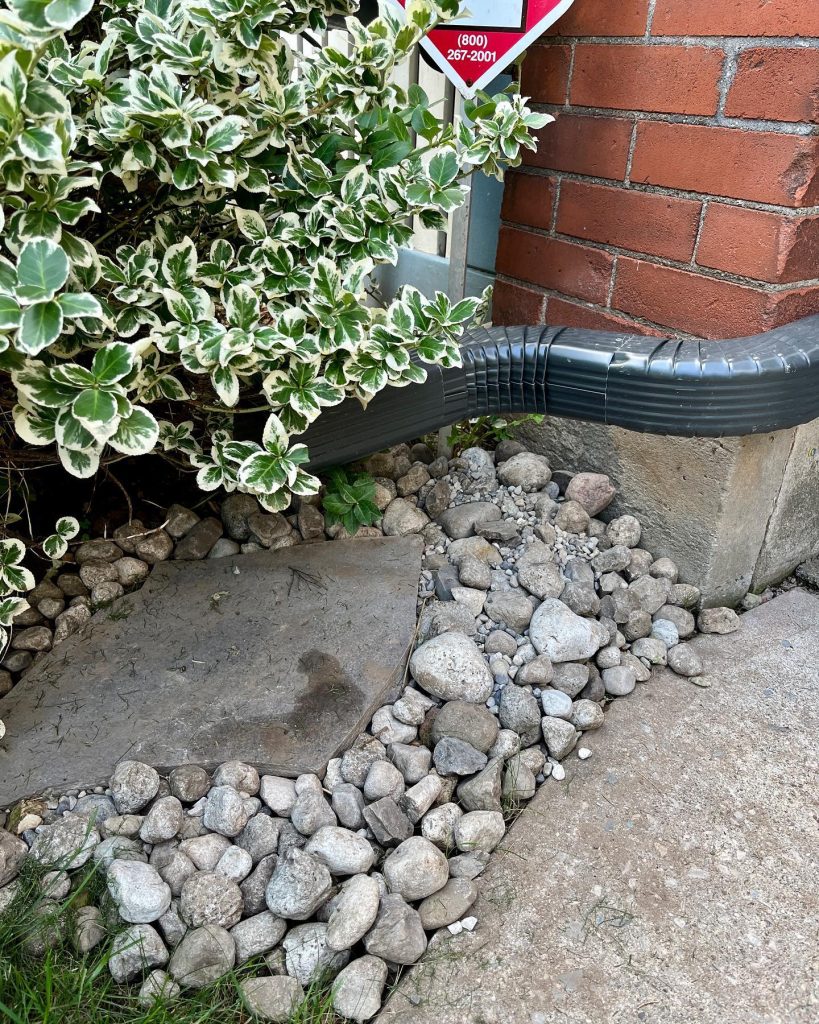
Want to extend your downspout in style? Try using a cedar box extension—a rustic, decorative channel that leads runoff where you want it.
These open-top troughs are made of cedar or pressure-treated wood and are placed right at the downspout exit. They guide water across your yard or garden in a controlled flow, and they look a thousand times more attractive than black tubing.
You can build them yourself or find pre-made kits. Add a coat of weatherproof stain to match your porch or patio furniture, and consider lining the box with plastic for durability.
This idea works well in small gardens, side yards, or along gravel paths. It’s functional, easy to maintain, and adds a handcrafted touch to your outdoor space.
22. Downspout Extensions Disguised as Garden Sculptures
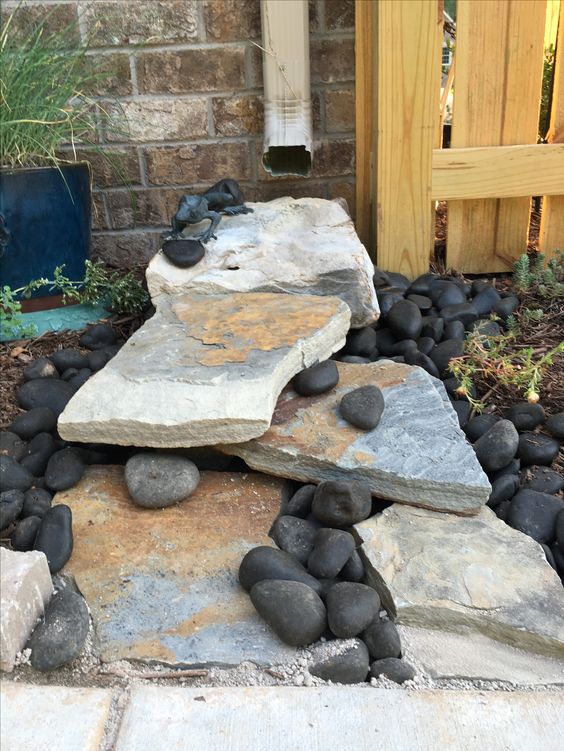
If you’re tired of looking at clunky downspout extensions, why not turn them into art?
Today’s garden retailers offer a range of decorative covers that hide your extension tubing inside charming sculptures—think ceramic turtles, faux logs, vintage milk jugs, or rustic barrels.
These pieces sit at the base of your downspout, cleverly masking the exit point while letting water pass through and away from your home. You can even find DIY tutorials to create your own using waterproof materials.
Perfect for front yards, back porches, or cottage gardens, they add a playful, personal touch to a necessary feature.
And because they’re easily movable, you can switch them out seasonally or relocate them during yard redesigns.
23. Bio-Retention Planters
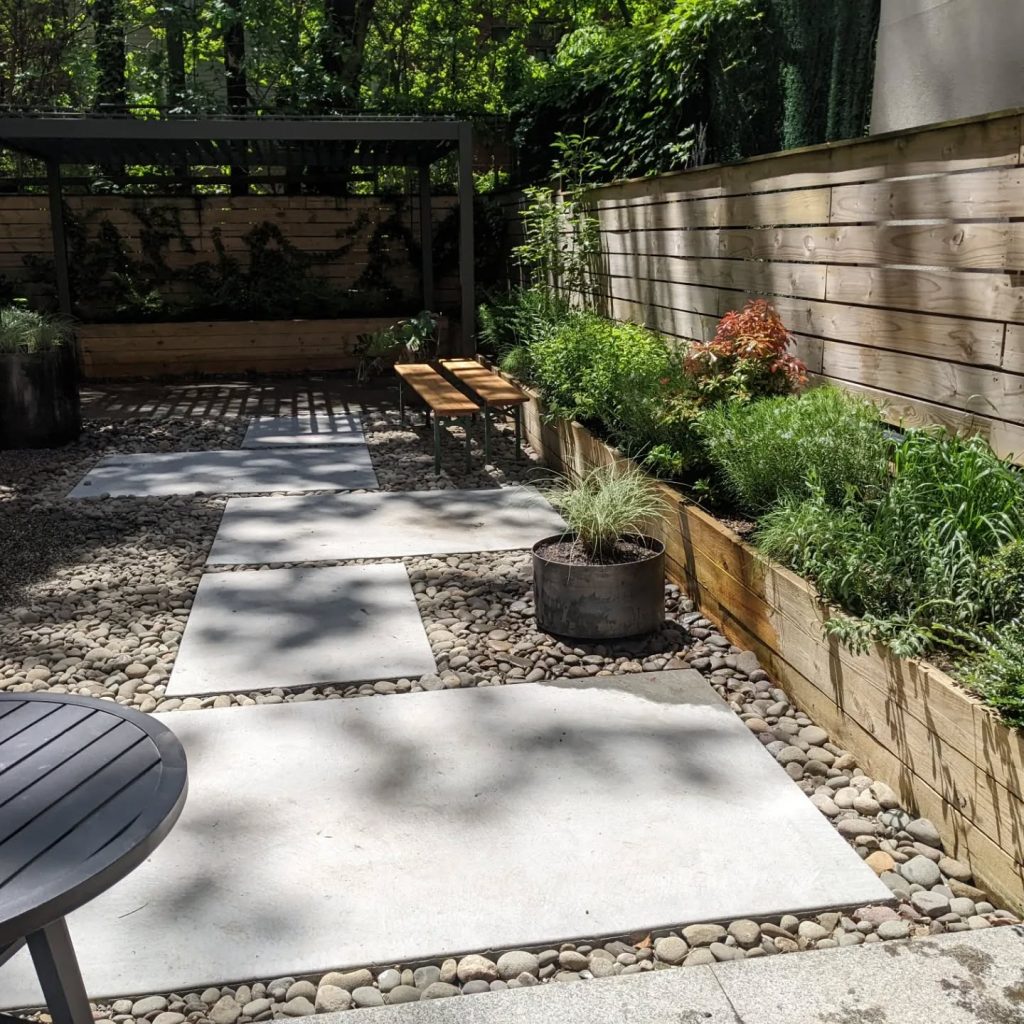
If you love the look of oversized planters, bio-retention planters give you form, function, and stormwater control in one elegant package.
These specially designed containers collect and filter runoff from your downspouts. They’re filled with layers of gravel, soil, and deep-rooted plants that absorb and clean the water before it enters the ground.
Use them near porches, patios, or pathways for maximum impact. They look beautiful with ornamental grasses, flowering perennials, or even small shrubs.
Choose containers in concrete, stone, or metal finishes to match your outdoor decor. Many of these planters are custom-designed for stormwater control, but you can also DIY one with proper drainage layers and hardy plants.
They’re a stylish way to boost your curb appeal while being kind to the environment.
Conclusion: Choosing the Best Downspout Runoff Idea for Your Yard
Every yard is different—but there’s a perfect runoff solution for everyone.
Whether you want something subtle like a gravel trench or something eye-catching like a rain chain or birdbath, the key is to match your solution to your home’s style, your climate, and your gardening goals.
Consider how much rainfall you get, where water tends to collect, and what kind of aesthetic you’re going for. And don’t be afraid to mix and match: pair a rain barrel with a dry creek bed, or add stepping stones to a rock garden runoff zone.
With a little inspiration and planning, your downspout runoff can transform from a problem area into a beautiful, functional feature that enhances your outdoor living experience.
